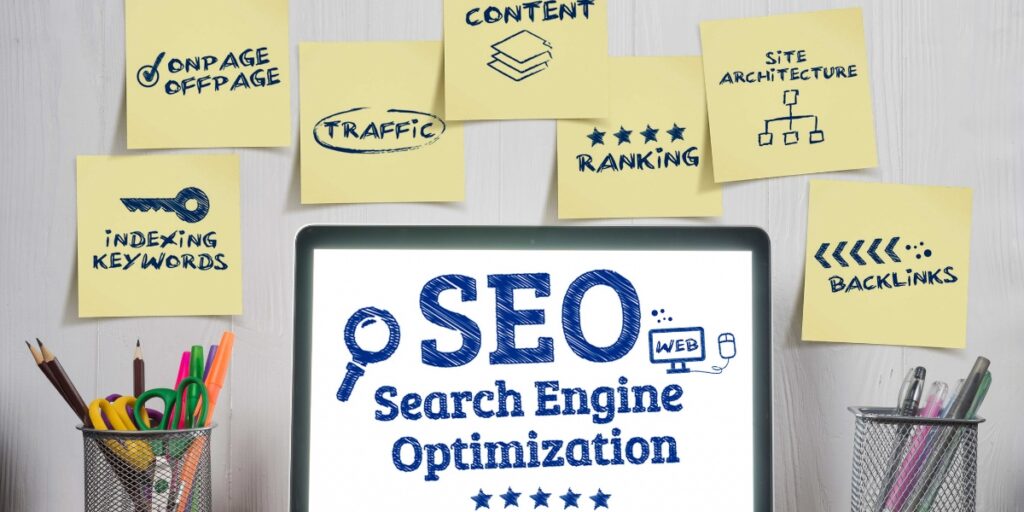10 On-Page SEO Mistakes You Must Avoid
Understanding Crucial On-Page SEO Mistakes
As digital landscapes evolve, mastering on-page SEO practices becomes pivotal. Amidst the quest for visibility and higher rankings, steering clear of certain blunders is paramount. Let’s delve into ten critical on-page SEO mistakes that can significantly impact your website’s performance and discover effective strategies to sidestep these pitfalls.
1. Neglecting Title Tags: The Gateway to Visibility
Title Tags: Your virtual welcome mat to users and search engines alike. Overlooking their significance undermines visibility. Ensure title tags encapsulate relevant keywords, succinctly describe content, and entice clicks.
2. Subpar Content Quality: The Foundation of Engagement
Content Quality: The cornerstone of user engagement and SEO success. Lackluster, uninformative, or duplicated content repels users and downgrades your site’s ranking potential. Focus on original, valuable, and keyword-rich content to captivate audiences and appease search algorithms.
3. Ignoring Meta Descriptions: A Missed Opportunity
Meta Descriptions: Often underestimated, these snippets play a vital role in attracting clicks. Crafting compelling, concise meta descriptions infused with keywords and a clear call-to-action can significantly enhance click-through rates.
4. Unoptimized URL Structures: Navigational Clarity Matters
URL Structures: An often overlooked but pivotal aspect of on-page SEO. Clean, descriptive, and keyword-rich URLs aid both search engines and users in understanding your content. Avoid lengthy, convoluted URLs that hinder navigation and comprehension.
5. Inadequate Internal Linking: Overlooking Pathways
Internal Links: The navigational arteries within your site. Neglecting a well-structured internal linking system inhibits user exploration and hampers search engine crawlers’ ability to index and comprehend your content thoroughly. Thoughtful internal linking bolsters both user experience and SEO.

6. Mobile Unfriendliness: Alienating a Vast Audience
Mobile Optimization: An indispensable aspect in today’s mobile-centric world. Failing to optimize for mobile alienates a significant user base and adversely affects rankings. Responsive design and mobile-friendly interfaces are imperative for SEO success.
7. Slow Page Loading: The Impatience Factor
Page Loading Speed: Users patience dwindles with sluggish loading times. A slow-loading site frustrates visitors, impacting bounce rates and search engine rankings. Optimize images, leverage caching, and streamline code to ensure swift page loading.
8. Neglecting Image Optimization: A Blind Spot
Image Optimization: Often overlooked, yet a treasure trove of SEO potential. Images add value but can also slow down sites if improperly optimized. Utilize descriptive filenames, employ alt tags with relevant keywords, and compress images for improved performance.
9. Excessive Focus on Keyword Stuffing: Balancing Act
Keyword Stuffing: Once deemed advantageous, now a perilous practice. Overloading content with keywords disrupts readability, irritates users, and triggers search engine penalties. Strive for a natural keyword integration that enhances context and readability.
10. Disregarding Analytics: The Power of Insight
Analytical Neglect: Failure to track and analyze website performance inhibits progress. Leverage analytics to discern user behavior, identify bottlenecks, and fine-tune your SEO strategies for continual improvement.
Navigating the On-Page SEO Terrain
Avoiding these ten on-page SEO blunders is pivotal for an effective digital presence. By meticulously optimizing title tags, content quality, URLs, internal linking, and mobile responsiveness while prioritizing page speed, image optimization, and prudent keyword usage, one can navigate the SEO landscape adeptly. Coupling these efforts with analytical insights ensures a robust, evolving SEO strategy primed for success.
Implementing Effective SEO Measures: A Continuous Journey
The realm of on-page SEO is a dynamic landscape, demanding ongoing vigilance and adaptation. Consistently updating strategies, staying abreast of industry trends, and refining approaches based on analytics foster a resilient digital presence.
Expanding Your SEO Arsenal: Tools and Resources
1. SEO Auditing Tools
Leverage comprehensive SEO auditing tools such as Screaming Frog, Ahrefs, or SEOptimer to conduct in-depth site analyses, identifying areas for enhancement and gauging your SEO health.
2. Structured Data Markup
Employ structured data markup, like Schema.org, to provide search engines with context, enrich search results, and potentially secure coveted rich snippets for improved visibility.
3. Semantic Keyword Research
Shift focus from mere keyword density to semantic keyword research. Understanding user intent and incorporating semantically related terms diversifies content, enhancing relevance without resorting to keyword stuffing.

Strategies for Unparalleled On-Page SEO Success
1. E-A-T Principle Implementation
Adopt Google’s E-A-T principle (Expertise, Authoritativeness, Trustworthiness) to fortify content. Credible, well-researched, and authoritatively crafted content aligns with Google’s quality standards.
2. Rich Snippet Optimization
Strive for rich snippet optimization by structuring content in a way that caters to featured snippets. Concise answers to queries, lists, tables, and clear formatting improve visibility in search results.
3. Voice Search Optimization
With the proliferation of voice search, optimize content for natural language queries. Tailor content to address conversational search queries, leveraging long-tail keywords and providing succinct, informative responses.
Conclusion: Sustaining SEO Excellence
Embracing on-page SEO practices demands vigilance, adaptability, and an unwavering commitment to user-centric, value-driven content. Evolve alongside search engine algorithms, integrate diverse strategies, and prioritize user experience to maintain a resilient digital footprint.
FAQs: Addressing Common Queries
Q. How often should I update my website’s content for optimal SEO performance?
A. The frequency of content updates depends on various factors. Aim for consistent updates to keep content relevant and fresh, aligning with your industry’s dynamics and audience needs.
Q. Are there any specific tools to aid in on-page SEO optimization?
A. Yes, several tools like SEMrush, Moz, and Google’s own Search Console offer valuable insights and functionalities for on-page SEO optimization.
Q. Can excessive internal linking negatively impact SEO?
A. Yes, excessive internal linking without context or relevance can confuse users and signal spammy practices to search engines. Focus on natural, relevant internal linking for optimal results.
Q. Can guest blogging positively impact on-page SEO?
A. Yes, when executed judiciously. Guest blogging on reputable sites within your niche can amplify brand visibility, drive traffic, and secure valuable backlinks if the content is high-quality and relevant.
Q. How can I rectify on-page SEO mistakes if they’ve already impacted my site?
A. Start by conducting a comprehensive audit to identify specific issues. Address each mistake methodically, focusing on improving content quality, optimizing technical aspects, and adhering to best SEO practices.
Q. Are meta keywords still relevant for on-page SEO?
A. No, meta keywords hold negligible value for modern search engines. Focus on crafting compelling meta titles, descriptions, and user-focused content, rather than meta keywords.
Also Read: Unlocking the Potential: Paid Advertising Strategies for Maximum Impact – Ennoble Technologies




